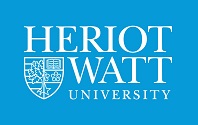 | Dr Carlos Martín-Fernández C.Martin-Fernandez@hw.ac.uk Carlos' research concerns the modelling of C–H activation using transition metals, with particular focus on the impact of dispersion effects for modulating the reactivity. He is working in collaboration with the group of Igor Larrosa at the University of Manchester. Carlos obtained his PhD from KU Leuven (Belgium) under the supervision of Profs. Jeremy Harvey and Kristine Pierloot studying the electronic structure of transition metal complexes with DFT and ab initio methods. Before that, he studied the Erasmus Mundus Master's in Theoretical Chemistry and Computational Modeling (EMTCCM) in Universidad Autonoma de Madrid (Spain) and worked as a predoctoral researcher at CSIC under the supervision of Prof. Ibon Alkorta. | |
Back to Group |
Recent Publications |
[10]. | Stand up for Electrostatics: The Disiloxane Case |
[9]. | Iron-Catalyzed Kumada Cross-Coupling Reaction Involving Fe8Me12– and Related Clusters: A Computational Study |
[8]. | On the Use of Normalized Metrics for Density Sensitivity Analysis in DFT |
[7]. | Energetics of non-heme iron reactivity: can ab initio calculations provide the right answer? |
[6]. | Ab Initio Calculations for Spin-Gaps of Non-Heme Iron Complexes |
[5]. | Hydrogen-Bonding Acceptor Character of Be3, the Beryllium Three-Membered Ring |
[4]. | Weak interactions and cooperativity effects on disiloxane: a look at the building block of silicones |
[3]. | Large Proton-Affinity Enhancements Triggered by Noncovalent Interactions |
[2]. | Modulating the Proton Affinity of Silanol and Siloxane Derivatives by Tetrel Bonds |
[1]. | Ferrocene and Silicon-Containing Oxathiacrown Macrocycles and Linear Oligo-Oxathioethers Obtained via Thiol–Ene Chemistry of a Redox-Active Bifunctional Vinyldisiloxane |
Heriot-Watt University, Institute of Chemical Sciences, Edinburgh, Scotland, UK EH14 4AS
